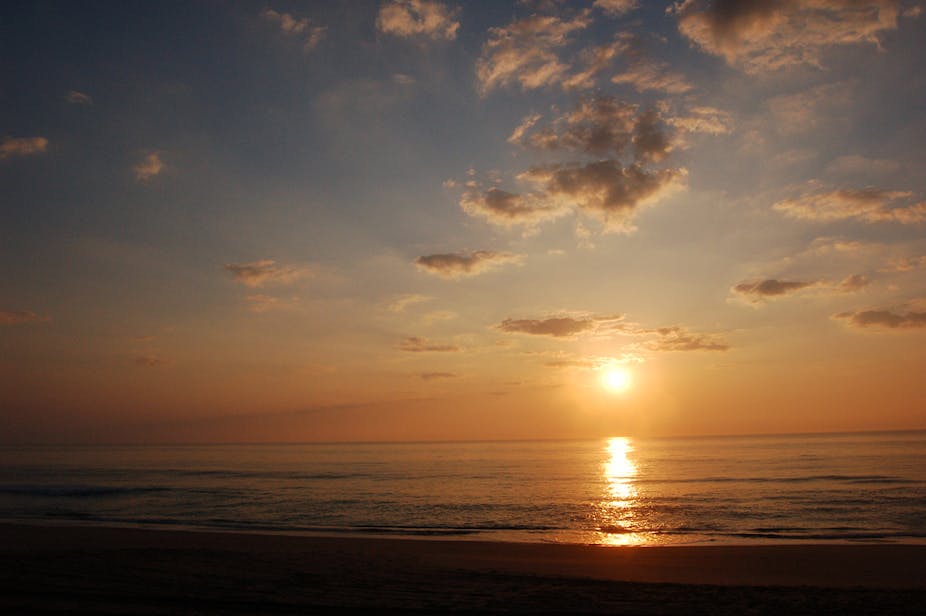When the Obama administration announced its proposed NASA budget in February, astronomers worldwide breathed a sigh of relief. Despite significant cuts in other areas, funding for the James Webb Space Telescope had been maintained.
Building and installing the telescope is going to cost US$8 billion – a lot of money for a single scientific facility. The project has also been plagued by considerable delays for the best part of a decade and was even slated for cancellation last year.
So why did astronomers fight so hard to get the project back on track?
Quite simply, it is the successor to one of the most successful scientific facilities ever built – the Hubble Space Telescope.
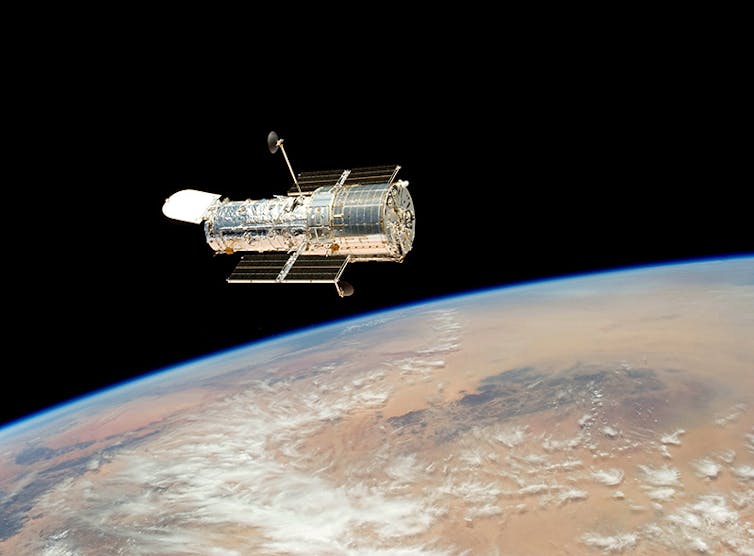
Some 21 years ago I had just finished my PhD in astronomy and was sitting in a bar in the Netherlands watching the news on TV. A story came on about how Hubble’s optics were seriously flawed and how its vision was too myopic.
This story had a tremendous impact on me as I was about to start my first real astronomy job – analysing images from Hubble itself. Luckily for me there was some interesting ground-based astronomy to do for a few years before the Space Shuttle went back to Hubble and installed corrective optics.
Now, in 2012, Hubble is in its old age but is still going strong (it won’t be “deorbited” until 2013, at the earliest). In the 22 years since the telescope was first launched, over 10,000 scientific publications have come from its data. It has led to a huge range of astronomical discoveries including:
- the existence of supermassive black holes in the cores of all large galaxies
- measuring the composition of the atmosphere in planets orbiting nearby stars, and
- accurately measuring the expansion rate of the universe.
But for me the most transcendental thing to come out of Hubble is something no other telescope could possibly have done – capturing the first pictures of the early life of galaxies in our universe.
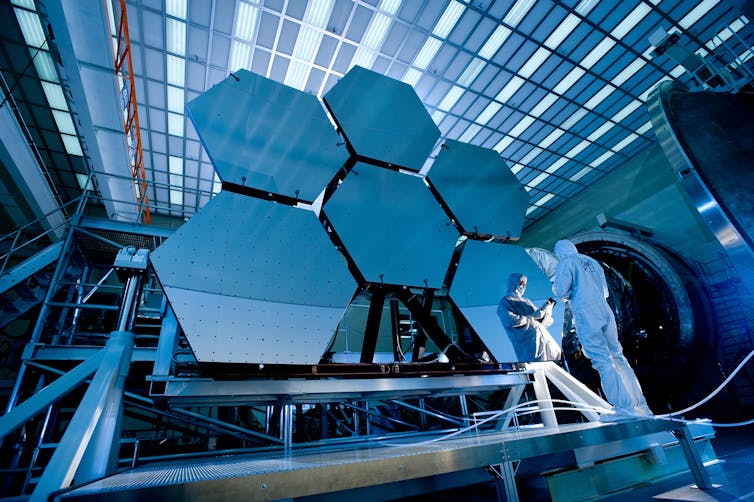
Early in my career (in the early 1990s) I worked extensively on images of distant galaxies collected from ground-based telescopes. My research was on galaxy evolution and an exposure of only a few hours with the then-new CCD cameras would reveal hundreds of galaxies – galaxies we thought to be several billion light years away.
The only problem was those galaxies were just tiny, fuzzy blobs. This is because no matter how large your telescope, the turbulence of the atmosphere limits the achievable angular resolution (the smallest angle at which an imaging device can distinguish two separate objects). Nearby galaxies showed beautiful symmetrical spiral and elliptical structures but we could not look beyond the nearby universe to answer the most basic physical question: what do early galaxies look like?
Getting beyond this seeing limit was one of the two main reasons Hubble was built (the other was to determine the rate of expansion of the universe). Observing the universe from above Earth’s atmosphere allowed Hubble to attain the full resolution possible with a 2.4m mirror – ten times sharper than images taken from Earth.
When the first deep Hubble images appeared on our computer screens (after the lens correction) – they were literally jaw-dropping. We would stare at them for hours, entranced by the experience of seeing, for the first time, something we had been working on for years.
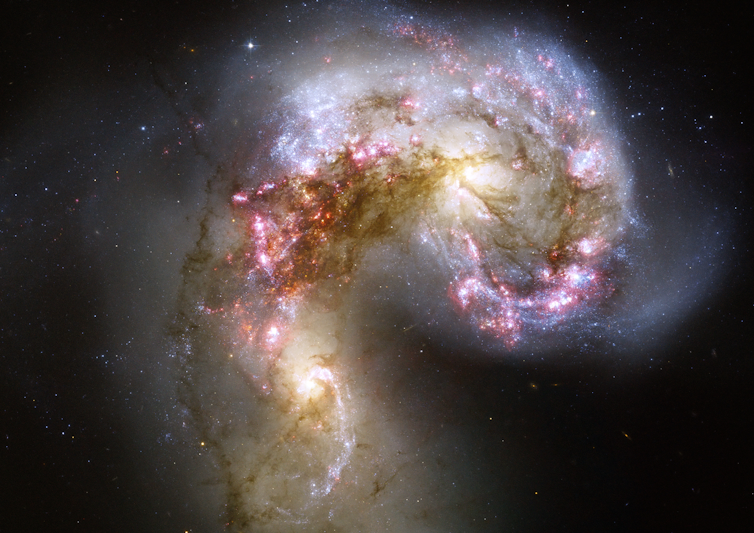
The Hubble images revealed a dramatic physical change in the galaxy population. As we looked back in time we could see galaxies which were recognisably spiral or elliptical but we also saw a rapidly rising number of galaxies which appeared lopsided or misshapen.
We were seeing galaxies at an earlier stage in their structural evolution; a time before they had settled down into regular shapes. Many of these galaxies had enormous regions of star-formation, which gave them a very lumpy appearance.
Of course we wrote numerous papers on these discoveries, but even today we are still working on physical models to explain how these galaxy structures build up and evolve over time.
This early work was “only” looking back about 5 billion years. Since then repeated astronaut visits to Hubble have progressively equipped the telescope with better cameras and the amount of telescope time devoted to “Hubble Deep Fields” has increased.
We now have extremely good images of galaxies from 10 billion years ago – a time when 80% of the stars in our universe formed in young galaxies with turbulent gas-rich disks. The limit of Hubble’s viewing range is now approaching galaxies from 13 billion years ago. At this time only a few galaxies had formed and they were quite small.
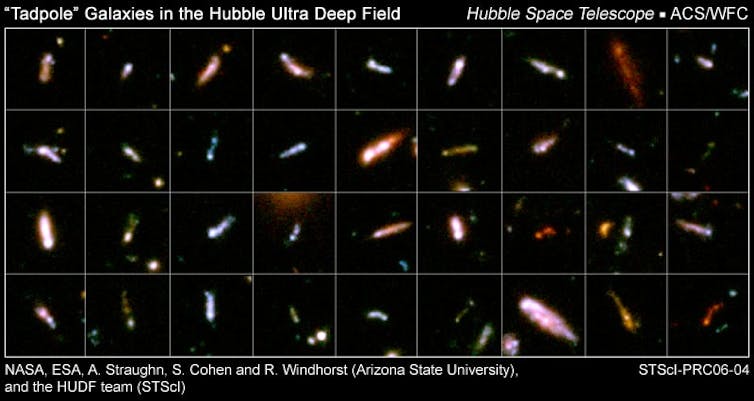
So what’s left to look for? Only everything.
We now think the universe is 13.7 billion years old and that the first 700 million years was the most interesting and ripe for new discoveries. This was a time when the universe’s very first stars would have formed. Those stars could not form in the same way as stars do today, given the lack of elements heavier than hydrogen and helium.
This is a “chicken-and-egg” problem in astronomy – heavy elements allow gas to cool down efficiently and collapse to form stars, but to make heavy elements in the first place you need stars!
How, where and when our universe’s first star formation took place is a grand challenge of astronomy. We think the first stars were monsters; what astronomers call ‘Population III’ stars.
In their very short lives these stars changed the basic state of the universe. For a start, their light probably ionised (gave a positive or negative electrical charge to) all the gas in the universe, creating the Intergalactic Medium we see today. These first stars then polluted the medium with heavy elements. This laid the groundwork for the formation of more grown-up galaxies and regular-sized stars like our own sun.
This epoch, called First Light, is in some ways the Holy Grail of cosmology. It is when the universe gave rise to complexity.
The promise of First Light is why astronomers have been so passionate about securing the future of the James Webb Space Telescope telescope above all other things. Finding First Light objects is the Webb’s central goal.

They are the reason the telescope is being built, why it’s optimised for the near-infrared (an invisible region of the electromagnetic spectrum), and why it is being launched into an exotic orbit beyond the moon, rather than a near-earth orbit like Hubble.
With any luck, the Webb telescope will be leaving Earth in 2018 and the first images will be arrive back on Earth some time in 2019. I fully expect these images to be as surprising and beautiful as the first pictures of deep time from Hubble.
We can only hope that another generation of young scientists will find these images as jaw-dropping as I found those first Hubble images all those years ago.
Further reading:
- First Light: The James Webb Space Telescope - NASA
- Stunning images from the Hubble Space Telescope – HubbleSite
- Galaxy Evolution: James Webb Space Telescope Science - NASA/YouTube

